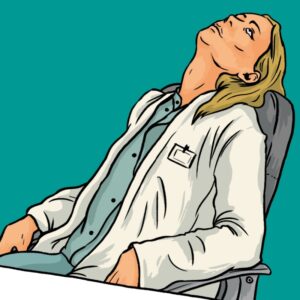85% of Michigan physicians blame admin burden for rising stress and burnout

Physician burnout is a critical issue threatening both the stability of Michigan’s healthcare workforce and the quality of care that Michiganders receive. It is also a driving force behind staff turnover and decreased productivity in the state. These issues extend beyond staffing concerns, impacting both the quality and experience of care. Research has found clear links between physician burnout and both increased medical errors and decreased overall patient safety.
While rates of physician burnout have decreased somewhat since the COVID-19 pandemic, burnout still affects 48 percent of U.S. doctors. Factors driving these trends include workload, practice environment, confidence in ability to succeed, and gender, where female physicians tend to experience burnout more often than males.
For this work, we used the American Medical Association’s definition of burnout: a long‑term stress reaction which can include emotional exhaustion, lack of empathy, and feelings of decreased personal achievement. To dig deeper into solutions for Michigan physicians specifically, we analyzed data from CHRT’s 2023 Michigan Physician Survey. The survey received responses from 1,596 licensed Michigan physicians.
Michigan primary care physicians are struggling.
Overall, our survey found that 43 percent of Michigan physicians report experiencing burnout. Among primary care physicians, the proportion who reported feeling burned out has steadily increased from 31 percent in 2018 to 39 percent in 2021 to 46 percent in 2023.
What’s causing physician burnout?
When asked which stressors contribute to physician burnout, 85 percent of Michigan physicians reported that administrative burdens and regulatory requirements, including charting and paperwork, were moderate or major sources of stress. Sixty-five percent reported that understaffing and staffing shortages were a moderate or major source of stress.
What would help Michigan’s physicians?
To dig deeper into potential solutions to burnout, CHRT asked Michigan physicians which tools or resources might be helpful. The biggest themes discussed called for:
- organizational change, including increased communication between administrators and physicians, and
- increased administrative support, like more support staff and improved charting systems.
Many physicians felt out of touch with practice administrators which led to feelings of being undervalued. Some physicians also mentioned the need for increased mental health services.
What can be done to better support our physicians?
In the full brief, we share a list of programs, initiatives, and calls-to-action with the goal of diminishing physician burnout within a variety of organizational settings. These initiatives were selected because they aim to reduce administrative burden and improve communication practices, which both stood out as needs from the survey.